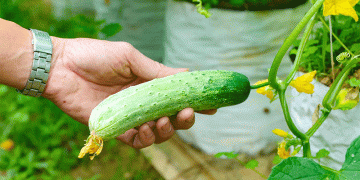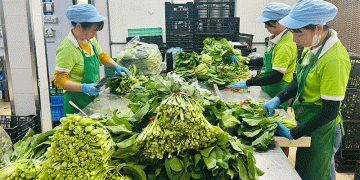Sixty years ago, the owners of a diner in Creston, Iowa needed a way to peel more potatoes to satisfy the growing demand for its hand-cut french fries.
The solution to that problem was a machine called the Veg-A-Peel, the first piece of equipment from a company that is now itself tackling new ways to meet a growing demand for its diverse line of food processing equipment.
Vanmark Equipment is celebrating its 60th anniversary in 2014. The company employs 50 people at two locations, the original plant in Creston and another facility in Boise, Idaho. Since the summer of 2007, it has been a wholly owned subsidiary of the Grote Company of Columbus, Ohio.
Vanmark’s produce industry equipment works with potatoes, carrots, peppers, onions and apples in 35 countries worldwide. In any given year, 50 to 70 percent of its business is devoted to potato equipment, but other areas are showing increased interest, said Tom Mathues, president of Vanmark.
The Boise plant is the site of the former GME International, which was acquired in 2012 and is now being incorporated into the Vanmark brand. The Boise plant specializes in hydrocutters, while the original Creston plant produces peelers, scrubbers, washers, fluming units and receiving lines.
George Mendenhall launched GME in the 1980s. He had become acquainted with Gilbert “Gib” Lamb, who developed the concept of hydrocutting during the 1960s, starting in a decidedly low-tech way.
“He reportedly loaded potatoes into a fire hose and shot them into a grid of knives to see what was feasible,” Mathues said.
Since acquiring GME, Vanmark has invested heavily in hydrocutting technology. Hydrocutting involves the use of pumped water that sends the item being cut through an array of knives precisely positioned to achieve the desired cut. The technology is widely used to produce straight-cut french fries and is also used for other vegetables such as carrots and peppers.
“Hydrocutting is also being used more in the production of items like carrot sticks, driven in part by the requirements of school lunch programs, where we see carrots replacing things like french fries,” Mathues said.
Vanmark has added the capability of fluid modeling to the art of hydrocutting. Fluid modeling offers the opportunity to virtually see the water and product flow in a new machine design and then to optimize it in a computer before ever building the first actual part, Mathues said.
The entire GME lineup of hydrocutting equipment is being redeveloped using the advantages of fluid modeling, to reduce turbulence and breakage of sticks and to improve the ability to center the products and stabilize them as they go through the cutting process, Mathues said.
“The product moves across the knives at 40 to 60 mph. If it’s not very stable and the knives aren’t held rigidly, you get an undesirable surface. Fluid dynamic modeling is yielding different shapes and the ability to both accelerate and decelerate the product and center it in the opening much more accurately than we were able to do at any time in he past,” he said.
The Creston plant manufactures peelers used on potatoes (french fries and chips) and carrots (including shaping and peeling of baby carrots). Other examples include peaches that are peeled and reduced to create a pulp, from which seeds are reserved and used for rootstock while the rest goes into juice.
Other lines of peelers are used for different purposes, including one that cleans culled apples used in juice, sauce and cider. In a related project, Vanmark peelers are being developed to remove the stickers from harvested apples destined for processing. Other produce, such as root crops and a few apples, are washed for fresh sale.
“One line of peelers is used in a totally unusual situation, where it takes the parting lines from newly molded golf balls,” Mathues said.
Receiving line equipment made at Creston includes bin storage for carrots, potatoes and other products that require short-term storage. The company also builds destoners, conveyors, washers and flume systems.
“If people have a need for in-process storage, we probably build the equipment to do it,” Mathues said.
The emerging Hispanic market is providing an area of growth for Vanmark, with its equipment used to cut peppers, and other items into strips. The market will be a big part of Vanmark’s future, along with continued developments in hydrocutting and other experiments, such as a machine that sections strawberries, and others that cut kiwifruit and other tropical crops such as jicama and cassava.
“Ten years ago, people who live in this latitude never heard of those. Now these are the kinds of things we are focused on,” Mathues said.
The move into other markets has led Vanmark to sell and install equipment in places such as the Middle East, India and Japan. As a new world middle class emerges, snack foods such as potato chips and french fries become part of the menu.
“We are fortunate enough to follow the potato chip manufacturers around the world and that got us into those markets,” Mathues said. “Now we’re doing the same thing with the fry industry. These things get you to the market and then it’s up to us to sell into other parts of the food market such as the fresh industry.”
































